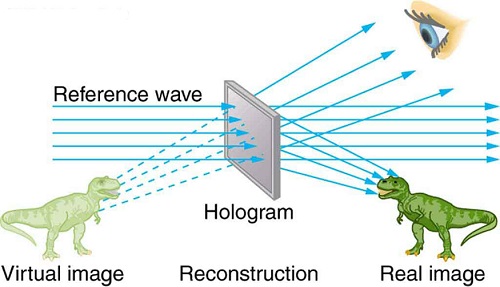Difference between Real Image and Virtual Image
An optical image is the reproduction of an object through a lens which results through the reflection, refraction or diffraction of light rays. A lens is an object, of transparent nature, that bends the rays of light. A lens can be of two types, concave or convex. The lens in turn create images. There are two types of images, created by lens, virtual and real. While similar in some respects, virtual and real images seem to be polar opposites. They are created when rays of light behave in an opposite manner, by lenses with opposite characteristics.
Keywords: image, lens, real, virtual, conclave, convex.
Real Image
Definition:
A real image is defined as one that is formed when rays of light are directed in a fixed point. A real image can be projected or seen on a screen. The best example of a real image is the one formed on a cinema screen.
Formation:
Real images are created when rays of light are converged by a convex lens also known as converging lens. The image is formed on the right-hand side of the lens.
Lens Description:
A convex lens, also known as a positive lens, is described as having thin edges and a thick middle surface. When rays of light pass through this lens the refracted rays of light, converge at one single point which is called a principal or focal point.
Position:
A real image is always inverted.
Virtual Image
Definition
A virtual image is defined as the opposite of a real image, therefore an image that cannot be obtained on a screen is referred to as a virtual image. The explanation for this is the fact that the rays of light that form a virtual image never converge therefore a virtual image can never be projected onto a screen. The best example of a virtual image is your reflection in the mirror.
Formation:
A virtual image is created when rays of light diverge from a concave lens. A virtual image is formed on the left-hand side of the lens.
Lens description:
As expected, a concave lens has opposite characteristics to a convex lens. It is also known as a negative lens. This lens is thin on the middle surface and thick on the outer edges. Unlike a convex lens, a concave one will diverge the rays of light
Position:
A virtual image is always upright.
The differences between Real and Virtual Images
In the world of optics real and virtual images are often described as opposites.
Real images are produced by intersecting rays while virtual images are produced by diverging rays.
Real images can be projected on a screen while virtual ones cannot.
Real images are formed by two opposite lens, concave and convex.
Virtual images are always upright while real images are always inverted.
Real Images Versus Virtual Images
| Real Images are formed by converging rays | Virtual images are formed by diverging rays |
| Real images can be projected or seen on a screen | Virtual images cannot be seen or projected on a screen. |
| Real images are formed by a convex lens | Virtual images are formed by a concave lens |
| A real image is always inverted | A virtual image is always erect |
Summary Points
Virtual and real images are the two types of images that can be created by light through the reflection, refraction or diffraction of rays. In optic physics the two ore often labelled as opposites in their characteristics.
The main difference between the two images is that a real image can be displayed or projected onto a screen while a virtual image cannot. The best example for this is a cinema screen image versus your reflection in the mirror.
The two types of images are created by two different types of lens. Real images are produced by a convex lens and virtual images by a concave lens.
When a real image is created the rays of light are converged into one focal point while for a virtual image the rays of light are diverged.
- Difference between Skeet and Trap - October 11, 2017
- Difference between Real Image and Virtual Image - September 30, 2017
- Difference between Latin America and South America - September 29, 2017
Search DifferenceBetween.net :
1 Comment
Leave a Response
References :
[0]Knight, Randall D. "Five easy lessons: Strategies for successful physics teaching." (2004): 414-414.
[1]Knight, Randall D. "Five easy lessons: Strategies for successful physics teaching." (2004): 414-414.
[2]The Editors of Encyclopædia Britannica. “Optical image.” Encyclopædia Britannica, Encyclopædia Britannica, inc., 20 July 1998, www.britannica.com/technology/optical-image. Accessed 26 Sept. 2017
[3]Image Credit: http://philschatz.com/physics-book/contents/m42602.html


does virtual images are formed by plane or convex mirror